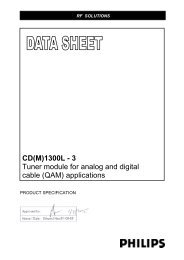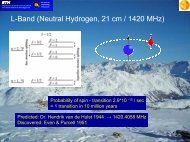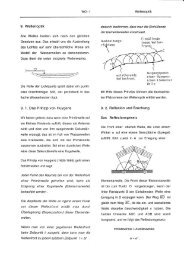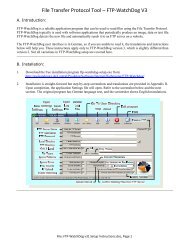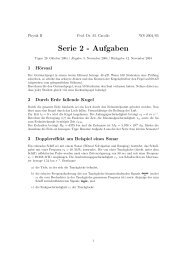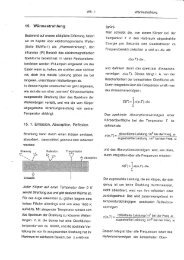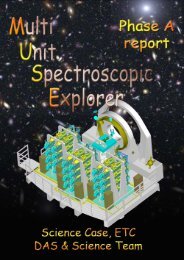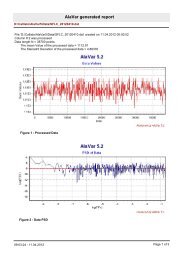Chapter 3: THE FRIEDMANN MODELS
Chapter 3: THE FRIEDMANN MODELS
Chapter 3: THE FRIEDMANN MODELS
You also want an ePaper? Increase the reach of your titles
YUMPU automatically turns print PDFs into web optimized ePapers that Google loves.
(3.4)<br />
&<br />
&&& 4πG R<br />
RR R<br />
3<br />
=− ρ<br />
2<br />
3 R<br />
R&<br />
2 8πG = R<br />
3 1<br />
ρ + 2ξ<br />
3 R<br />
R&<br />
2 8πG = ρR<br />
2<br />
+ 2 ξ<br />
3<br />
Here, ξ is a constant of integration that, in this Newtonian analysis, corresponds to the<br />
binding energy of the system: If ξ > 0, then we have solutions with<br />
&R 2 → 2ξ as R→ ∞. R(τ) is proportional to τ and the Universe is unbound and<br />
expands forever. If ξ < 0, we get R & = 0 at finite R so the Universe is bound and at<br />
some point the expansion is halted and the Universe recollapses. If ξ = 0, then we<br />
have the asymptotic limit R & → 0 as R→ ∞<br />
Note that this has exactly the same form as the Relativistic Friedmann equation (3.1)<br />
with Λ= 0 if we associate the ξ binding energy with the curvature term.<br />
Let us now return to the equation of state and consider possibilities other than the<br />
familiar one considered above, where we assumed that the density is dominated by<br />
dust with ρ ∝ R -3 .<br />
An obvious possibility is that the density of the Universe is dominated by<br />
electromagnetic radiation, e.g. the cosmic background radiation field. As the<br />
Universe expands, the density of this radiation field will drop as R -4 . We get a factor<br />
of R -3 from the decreasing number density of photons, but an additional factor of R -1<br />
from the fact that all the photons lose energy due to the redshift.<br />
There are other more exotic possibilities. As we’ll see below, we could imagine a<br />
scalar density field that does not change its density as the Universe expands, i.e. ρ =<br />
constant (more than that – in fact we have evidence that this is the case!). We will<br />
refer to this as a false vacuum density.<br />
Other possibilities exist. A few years ago there was some interest in hypothetical<br />
Universes that were dominated by the mass from “cosmic strings” – strange entities<br />
that have a constant density per unit length regardless of how much they are stretched.<br />
These give ρ ∝ R -2 . It is easy to see that putting these other ρ(R) dependencies into<br />
our Newtonian equation (3.3) will not yield the right form of (3.4) upon integration<br />
unless we introduce a small fudge. To see how to proceed, it is useful to consider the<br />
ρ(R) dependence in thermodynamic terms.<br />
We can assume that the expansion is adiabatic (i.e. that there is no inflow or outflow<br />
of heat). The 1st Law of Thermodynamics gives us that the change in the internal<br />
energy (ρV) equals the pdV work done by the system in expanding:<br />
2<br />
(3.5) c d( ρV)<br />
=−pdV<br />
⇒<br />
dρ<br />
=−<br />
( ρ + pc)<br />
2<br />
3<br />
dR<br />
R<br />
If the pressure can be neglected, then




